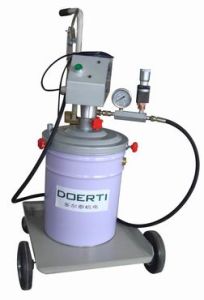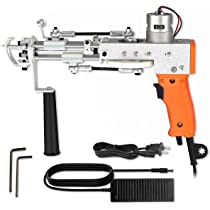We all know the importance of a good night’s sleep, especially for children. A good kid’s sleeping bag can make or break any camping or outdoor trip. But how long should these bags last? How many nights of use can you get out of them before they have to be replaced? In this article we will discuss the longevity that can be expected from a quality kid’s sleeping bag, and what factors may affect their lifespan.
Sleep for Kids
When it comes to sleep for kids, having a reliable sleeping bag is crucial for ensuring they get a good night’s rest in the great outdoors. But how long can parents expect these essential pieces of camping gear to last? The lifespan of a kid’s sleeping bag greatly depends on several factors, including the quality of materials used and proper care.

Generally speaking, most kid’s sleeping bags should last at least three to five years if properly cared for. This means storing them in a cool, dry place when not in use and washing them according to the manufacturer’s instructions. However, if your child frequently uses their sleeping bag or you plan on taking it on extended camping trips, you may need to replace it sooner.
To ensure their child gets the most out of their sleeping bag investment, parents should consider purchasing high-quality options from reputable brands known for durability and longevity. Additionally, investing in accessories such as sleep liners can also extend the life of the sleeping bag by protecting its interior from dirt and sweat buildup over time.
What is a Kid Sleeping Bag?
A kid sleeping bag is a specially designed sleeping bag for children. It is smaller in size and has a different shape than adult sleeping bags, allowing children to stay warm and cozy while camping or traveling. Typically, these bags are made of lightweight materials and come with features such as hoods and zippers that are easy for kids to use.
The lifespan of a kid’s sleeping bag depends on the quality of the product, frequency of use, and how well it is maintained. A high-quality sleeping bag can last several years if properly taken care of, while a lower-quality one may not make it through an entire season. Generally speaking, most kids’ sleeping bags are designed to withstand moderate wear and tear, but they should be inspected regularly for signs of wear or damage.
In order to prolong the life of a kid’s sleeping bag, it should be stored properly when not in use. This means keeping it dry and clean by storing it in a cool, dry place away from direct sunlight or moisture. Additionally, parents can ensure their child’s comfort by using extra padding under the sleeping bag or purchasing an insulated mat to place underneath for added warmth. Ultimately, investing in a durable and reliable kid’s sleeping bag will provide comfort for many nights under the stars.
Material Considerations
When it comes to kids’ sleeping bags, the material used in its construction is a crucial consideration. The durability of a sleeping bag depends on the quality of the materials used to make it. Generally, good quality sleeping bags made from high-quality materials last longer than those made from low-quality materials. Nylon and polyester are popular fabric choices for kids’ sleeping bags as they are durable and lightweight.
Another important factor to consider when choosing a kid’s sleeping bag is insulation. Synthetic insulation can be an excellent choice for children’s sleeping bags as it provides warmth even when wet. Down insulation, while it offers exceptional warmth, may not be ideal for young children who tend to get their gear wet or damp easily.
Lastly, the size of the sleeping bag also plays a significant role in its durability. A snug-fitting bag will wear out more quickly than one with some extra room for movement inside. It is essential to choose a size that fits your child comfortably so that they can enjoy using their sleeping bag for years to come without having to replace it frequently due to wear and tear.
Quality vs. Cost
When it comes to purchasing a kid’s sleeping bag, parents are often faced with the question of quality versus cost. While cheaper options may seem like a good idea at first, they may not last as long as higher-quality options. The lifespan of a sleeping bag can depend on various factors such as usage frequency and care, but in general, a well-maintained sleeping bag should last for several years.
Cheaper sleeping bags may have lower quality materials that can wear down quickly or lose their insulating properties after only a few uses. On the other hand, investing in a higher-quality sleeping bag made from durable materials can pay off in the long run by providing better insulation and lasting for many camping trips to come. Additionally, high-quality sleeping bags will often come with warranties or guarantees that offer added peace of mind and protection against defects.
Ultimately, when deciding between quality and cost for a kid’s sleeping bag, it is important to consider how frequently the item will be used and how much you are willing to spend upfront versus potentially needing to replace it sooner than expected. By weighing these factors carefully and doing research on different brands and models before making your purchase, you can ensure that your child stays comfortable during camping trips without breaking the bank.
Cleaning & Care Instructions
Cleaning and care instructions are critical for ensuring the longevity of any product, including a kid’s sleeping bag. A sleeping bag can last anywhere from one camping trip to several years, depending on how well it is taken care of. The first step in extending the life of your child’s sleeping bag is to make sure it stays clean. Always shake out any debris or dirt before packing up the sleeping bag after each use.
When it comes time to wash the sleeping bag, be sure to follow the manufacturer’s instructions carefully. In general, most kid’s sleeping bags can be machine washed using a gentle cycle with cold water and mild detergent. Avoid using fabric softeners or bleach as these can damage the insulation and fabric of the sleeping bag.
In addition to washing, proper storage is also crucial for maintaining your child’s sleeping bag. Be sure to store it in a dry place where it won’t be exposed to moisture or pests like mice or insects that could chew through fabric and insulation. By following these simple cleaning and care instructions, you can help extend the life of your child’s sleeping bag so they can enjoy many nights under the stars for years to come!
Durability Factors
When it comes to purchasing a kid’s sleeping bag, it’s important to consider durability factors. The lifespan of a sleeping bag is dependent on various factors such as the quality of materials used, how often it is used, and how well it is maintained. A high-quality sleeping bag made with durable fabrics such as ripstop nylon or polyester will typically last longer than one made with cheaper materials.
Another factor that can affect the lifespan of a kid’s sleeping bag is how often it is used. If your child only uses the sleeping bag once or twice a year for camping trips, then you can expect it to last several years. However, if your child frequently uses the sleeping bag for sleepovers or outdoor adventures throughout the year, then you may need to replace it more often.
Lastly, proper maintenance and storage are crucial in extending the lifespan of a kid’s sleeping bag. Always follow manufacturer instructions for cleaning and storing the sleeping bag properly between uses. In general, closing zippers before washing, avoiding harsh detergents and using mild ones instead work wonders in keeping these bags clean and fresh-smelling whilst making them last longer too!
Invest Wisely
In conclusion, investing wisely is essential when it comes to buying a kid’s sleeping bag. A good quality sleeping bag can last for years and provide comfort and warmth during camping trips or sleepovers. However, purchasing a cheap and low-quality sleeping bag may end up being costly in the long run as you’ll have to replace it frequently.
It’s important to do your research before making a purchase and ensure that the sleeping bag meets your child’s specific needs. This includes considering factors such as temperature ratings, size, weight, insulation type, and durability.
Ultimately, investing in a high-quality kid’s sleeping bag will not only save you money but also provide peace of mind knowing that your child is safe and comfortable while enjoying outdoor adventures.





